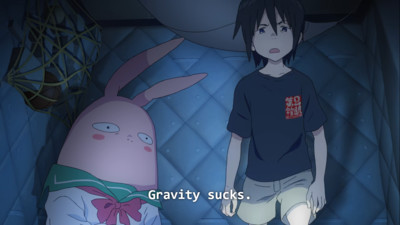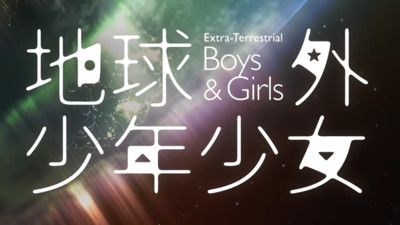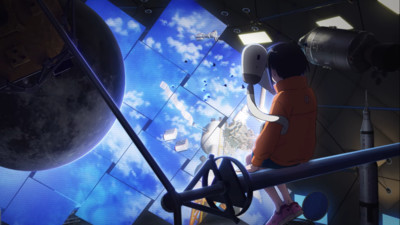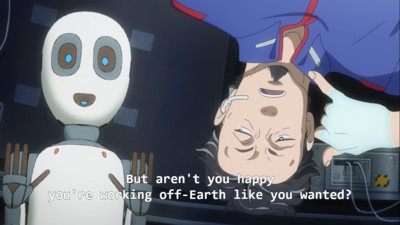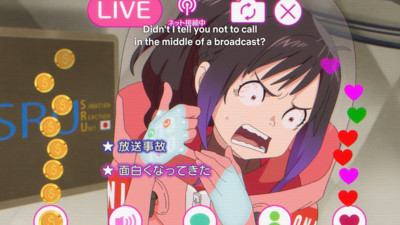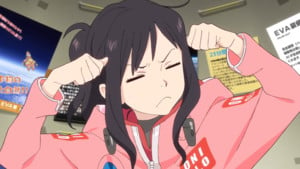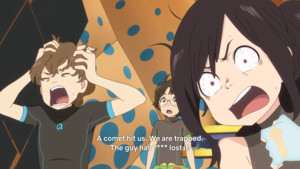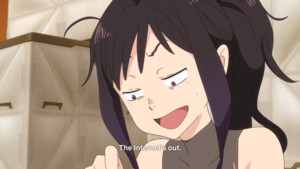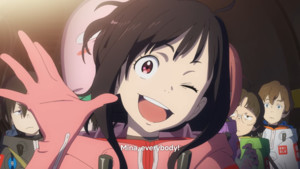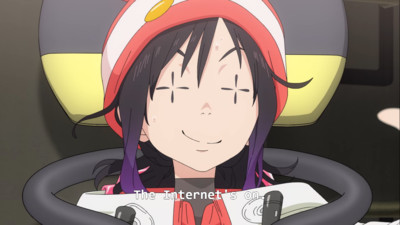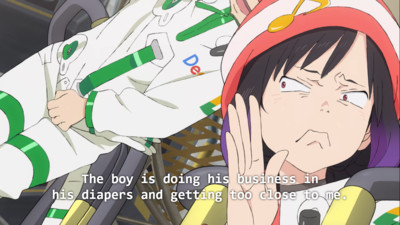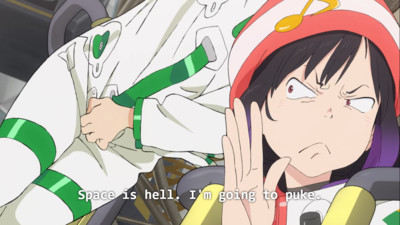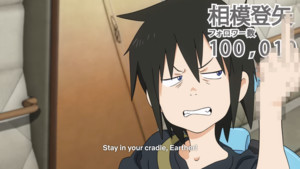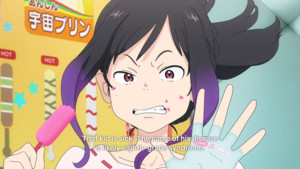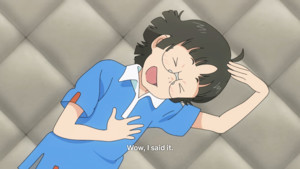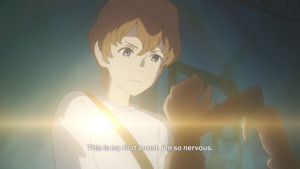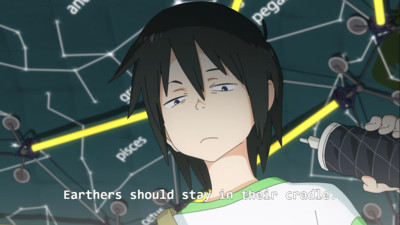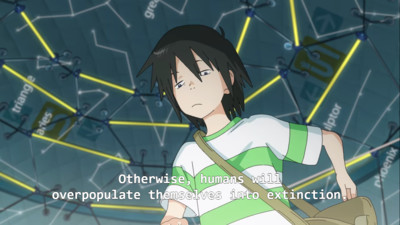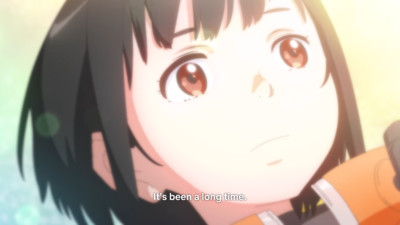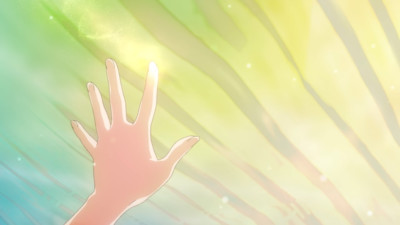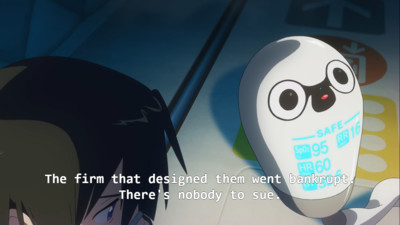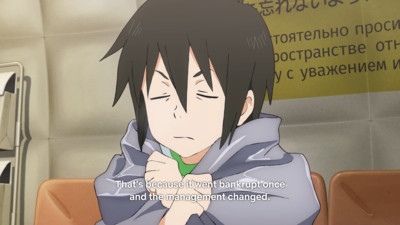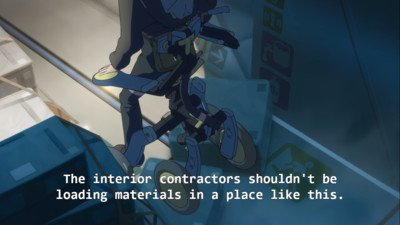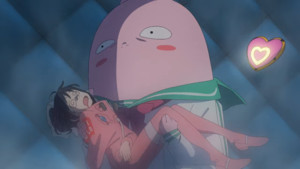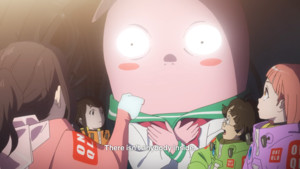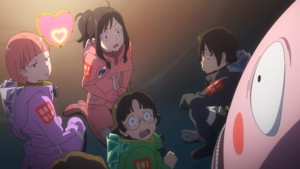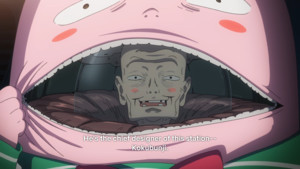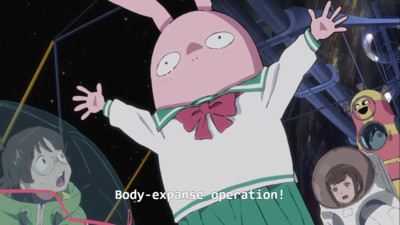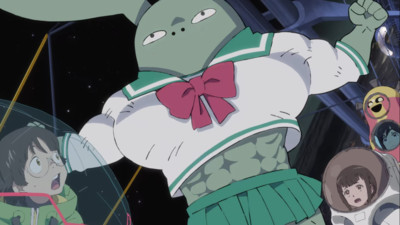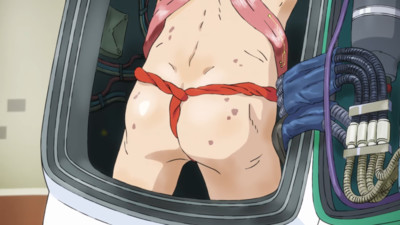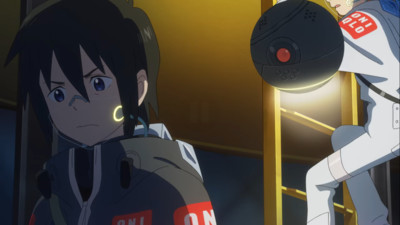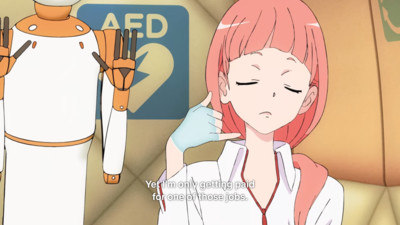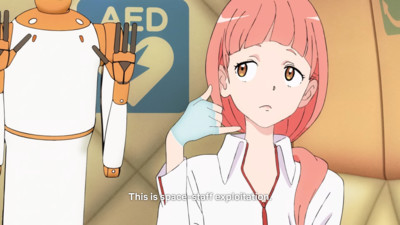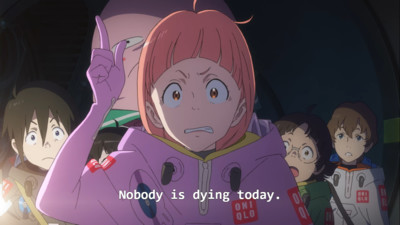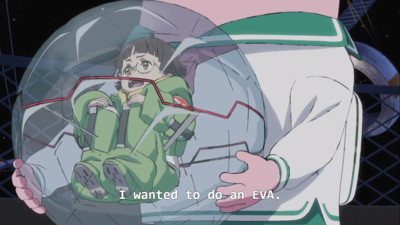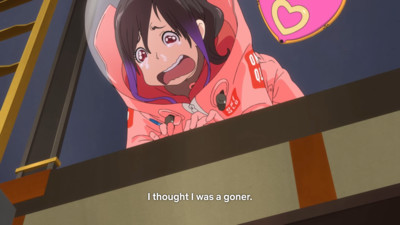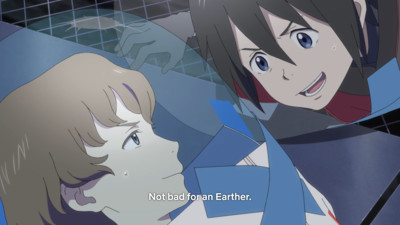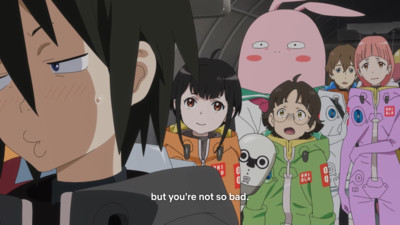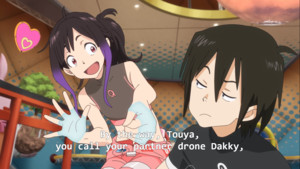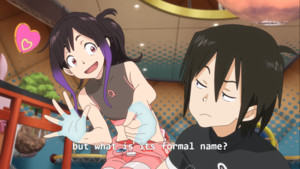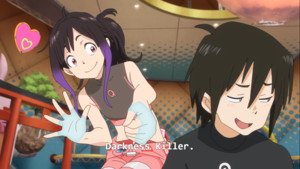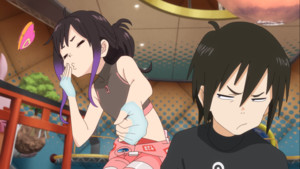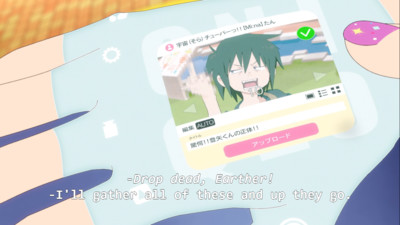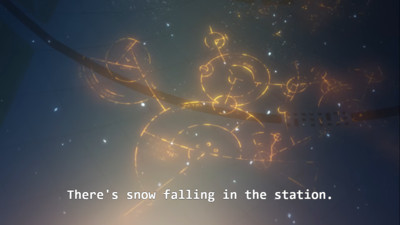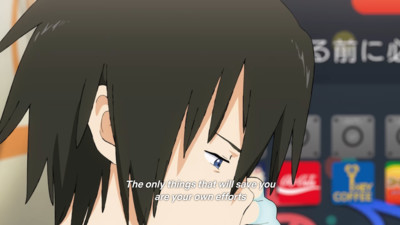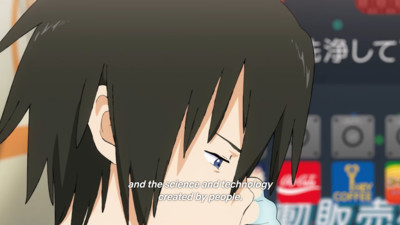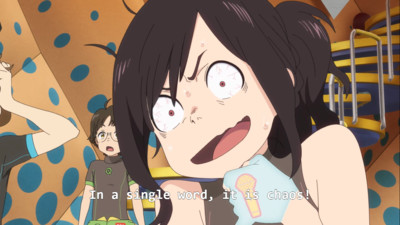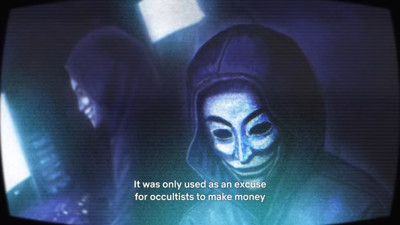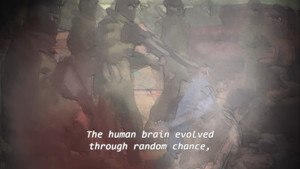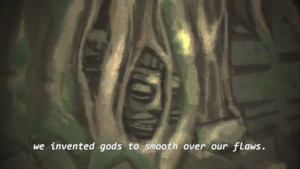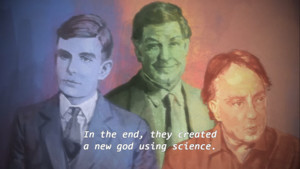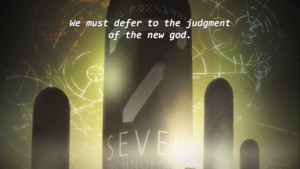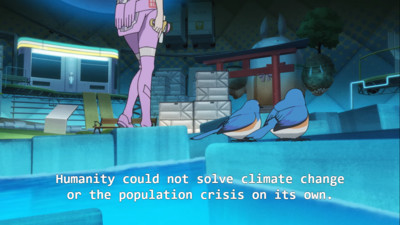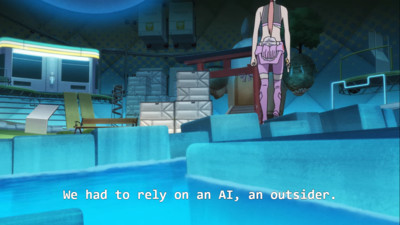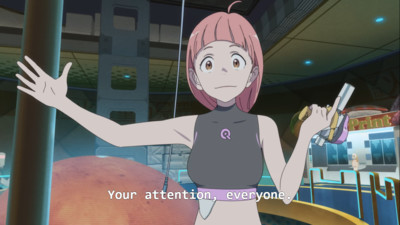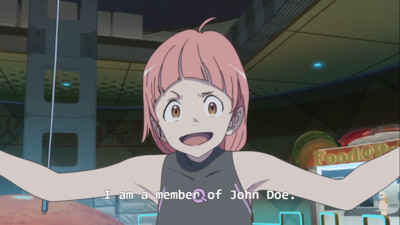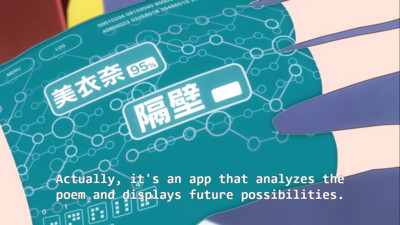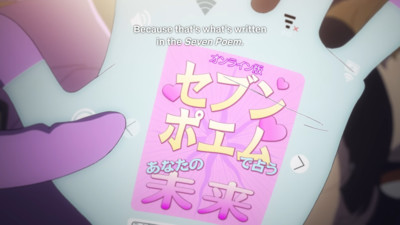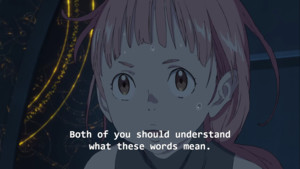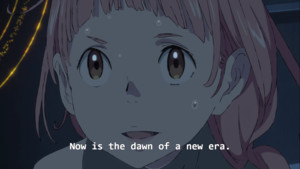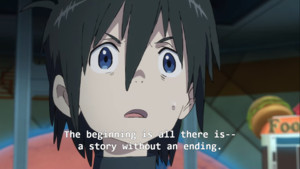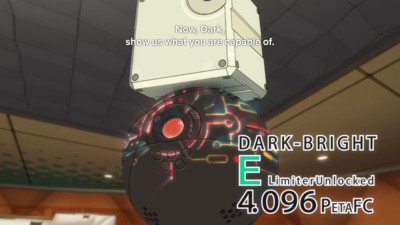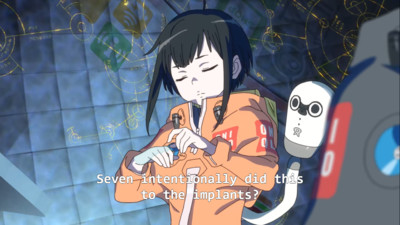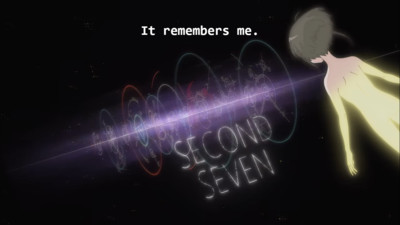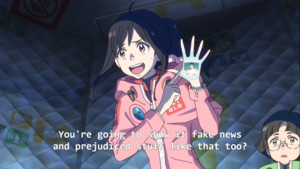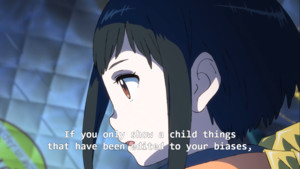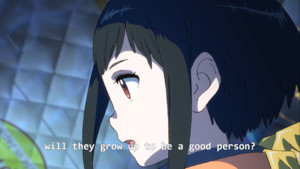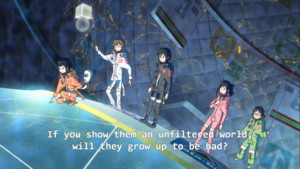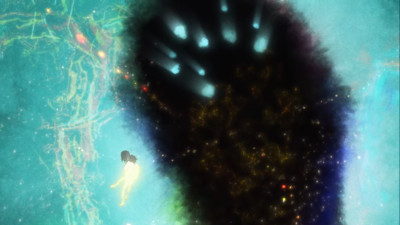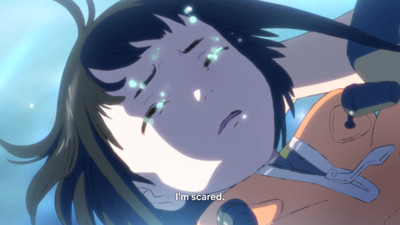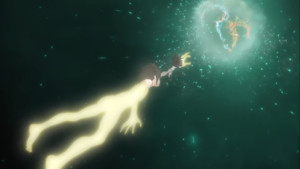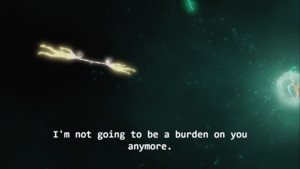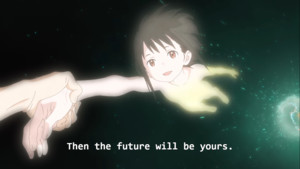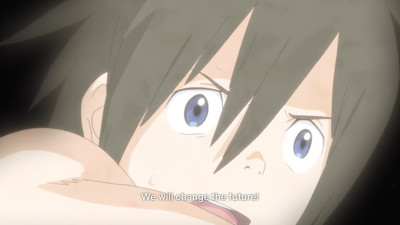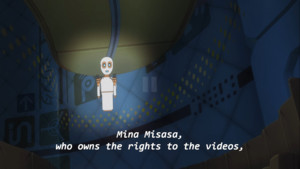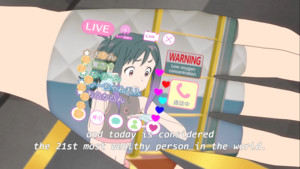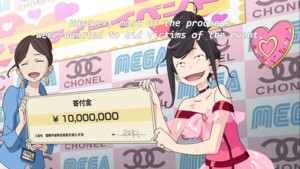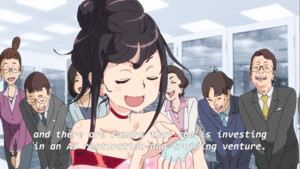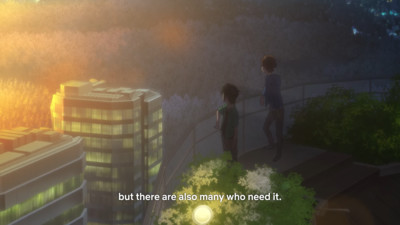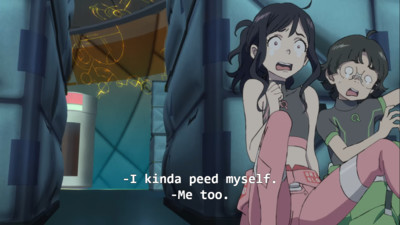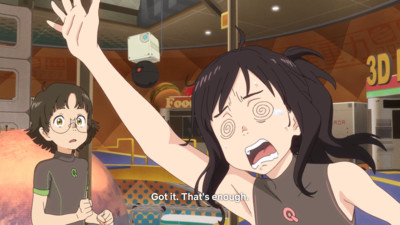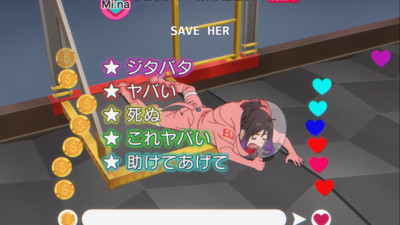After more than a decade away, fan-favorite creator Mitsuo Ito is back with more sci-fi shenanigans. However, behind its "kids in lost in space" surface is a much deeper treatise on humanity's relationship with tech, nihilism, and fighting your fate.
This series is streaming on Netflix
Disclaimer: The views and opinions expressed by the participants in this chatlog are not the views of Anime News Network.
Spoiler Warning for discussion of the series ahead.
Nick
Well Nicky, we're still waiting for this new season of anime to kick into gear, but I've got just the thing to hold us over: not only is there a hot new piece of original science-fiction fresh off the Netflix servers, but it gives me the perfect chance to say my piece on Alfonso Cuarón's worst movie:

Nicky
Well, unfortunately that's the only one of his I haven't seen so I can provide no comment, witty or otherwise. But I feel the sentiment. Why do things have to be so heavy all the time? You're telling me I have to use energy to move these goddamn meat cylinders?! Why don't we take a few seconds to get away from it all? We're here and launching ourselves into Mitsuo Iso's latest series, The Orbital Children!

I'm pretty sure I'll get motion sickness on the way up, but after more than a decade away I certainly won't say no to a new Mitsuo Iso project. So suit me up and fire me into the sky on Elon Musk's death tube, baby.

For those of you unaware, Iso has really been around the block as an animator, director, and storyteller. He started working on Gundam under a pseudonym, would later do key animation for Studio Ghibli, was involved in planning Evangelion, did some of the best goddamn animation in End of Evangelion, and then continued to be just a phenomenal animator until he created, wrote, and directed the entirely original "Kids Love Science" series Den-noh Coil.
I was excited for this series just for the fact that I'd have another opportunity to peer pressure friends into watching Den-noh Coil, hands down one of the best anime of the century and a criminally overlooked classic. But it certainly helps that Orbital Children is a mini-series basically made for me.
I haven't watched all of Den-noh Coil myself so I recognize I'm totally part of the problem. (In my defense, I own the Blu-ray). From what I know about it, The Orbital Children really does feel like a "spiritual successor." It's using kids to explore hard sci-fi ideas with a playful and adventurous heart.
It's very much in-line with Den-noh Coil. Iso does a lot of new shit with this series, but it's also a way to revive and refresh various ideas and designs he utilized to great effect in that show. For instance: hand phones.

He came up with that one 15 years ago and has never let it go, and he's right to do it. Apple could never.
It's interesting how well it translated into the smartphone era! While it may re-use some of the ideas from the 2007 series,
Orb Kidz explores the relationship to technology in a way that feels relatable and natural. Especially when you make one of the characters a goddamn live streamer obsessed with gaining the most followers even when her life might be in peril. Technology changes but people stay relatively the same.

Yeah, while YouTube existed back in
DC's day, it had yet to become the culture we know and can't escape today. Mina is definitely a necessary addition for telling a story about kids and technology in the TikTok Era.


That said, Mina is the best and I love her.
Mina's also just a great way to display the casual, wearable tech that's littered throughout the setting. Its just called "Smarts" in the subtitle translation, but its essentially impossibly thin, translucent smart devices that can do everything from turning your hand into a touch screen to giving you an RGB rig in your hair.


Like damn, I wish I could download highlight and just toggle them on and off.
Having technology both socially and physically embedded in you comes with its weaknesses too. After winning a contest, three Earth kids—Mina, her little brother Hiroshi, and Taiyou—all travel to a commercial space station, Anshin. They meet our main character, Touya, who lives there in order to undergo physical therapy before immigrating to Earth. He and another girl, Konoha, were both born in space and had microchips implanted in their brains in order to survive. This apparently comes with some issues that we'll go into later, but as stuff goes down we see how these kids are helped or hindered by technology.
It's a charming little setup for some cool speculative fiction—the idea of space tourism and colonization is certainly a pertinent one in the current tech era. But as with Den-noh Coil before, Iso takes that idea and uses it to create a dense, ambitious story that tries to tackle a number of seemingly disparate topics at once. All in about three hours. And it does all of this while also making time for goofy shit like 12-year-olds pissing in their space skivvies.


Taiyou especially has an entire space shuttle's worth of baggage. We slowly learn about his past across the first half of the story, but essentially he and Konoha are the last "extraterrestrial" children alive, since it turns out being born in the moon's gravity and atmosphere severely ramps up infant mortality. So you can understand why he's such a grumpy little shit.


Also he's kiiiiiind of an eco-fascist? Kid really needs to learn to channel his angst into a nu metal phase like the rest of us.
The chip in his head was actually designed by The Smartest AI Ever simply called "Seven". Apparently the chips were supposed to dissolve as the space kids grew older but after Seven went a little crazy and had to be shut down, they noticed a design flaw. Now the chips could threaten both Taiyou and Konoha's lives and futures. I haven't really mentioned Konoha's personality, but she's particularly defined by being frail and also listening to SPACE WHALES.


Yeah, on the surface Konoha is easily the least developed of the five central kids, but that turns out to be partially on purpose. While Taiyou's channeled his impending death into anger and resentment, Konoha's gone beyond making peace with it and almost seems to be anticipating slipping the mortal coil.
Also, while all that Seven stuff becomes important later, my favorite early detail is that they can't even get compensation for the faulty brain implants because the company that made them filed for bankruptcy. Even in the future, tech companies just waltz through loopholes.

It's one of the few subtle details of capitalism's relationship to technology in this imagined future. The whole space deal is dependent on capitalistic interests. There are tons of little details about branding, tourism, company management, and budget restraints. The Anshin Station is again, a completely commercial venture. But tons of it is still unbuilt, understocked or just flat unsafe. It's the worst theme park vacation where half the rides aren't even finished. It's presented in a matter-of-fact kind of way but it's definitely an important detail and often an obstacle.

It might at first just seem like a simple bit of commentary, but it gradually becomes central to the point of the whole production. These are cool, amazing, even revolutionary pieces of tech, but they are still bound by the human imaginations and societal systems that created them. It's funny that the the spacesuits have big honking UNIQLO logos, but it's also pertinent that said spacesuits aren't properly stocked in the emergency shelters where they're supposed to be. Or how vital escape passages are backed up with building supplies by workers who didn't follow proper safety procedures.

It's like somebody parking a shopping cart in front of a fire exit, only in a metal tube floating in the vacuum of space.
I've had nightmares about this thing before.


The mascot suit, along with having super-strength capabilities, also functions as an old-fashioned spacesuit.

Very old-fashioned.
Anyway, the actual story of this whole thing kicks off when an unexpected meteor shows up out of the wild blue nowhere and chunks of it collide with the Anshin. This just happened to occur when all the responsible adults were up in the control room, so the kids have to brave the dangers of a failing space station with determination, pluck, and Peer-To-Peer communication tools. So basically me trying to survive an 8am Computer Networking class in college.

When this happened Touya and Taiyou happened to be rough-housing over who has the better robot pet while the siblings and their official nurse and unofficial babysitter, Nasa Houston (yes, really) follow in an elevator. Nasa ends up injured in the impact and so the kids are pretty much on their own at first.


Nasa Houston, by the way, is absolutely a Gundam name.

While it's scary trying to watch the kids survive in the very dangerous realm of space, I never felt like it was too tense to watch. It's not like Made in Abyss where we watch children cry and suffer in hazardous unexplored territory. There are parts of The Outer Wilds or Astra: Lost in Space that are much more terrifying, but this is a good thing since it keeps it from feeling alienating to a younger audience. The characters do a lot to keep the situation light while also being resourceful.
There's danger, certainly, and a lot of it is tinged with grounded space science, like when Touya and Taiyou have to manually decompress their space suits to keep their literal blood from boiling. But it's very much got the feeling of a classic kids film where the danger is there to add excitement and develop the characters through action. Also one of them gets carried around in a hamster ball for a while.

Even when Mina almost has a close brush with death it's still super funny! Other times it's interesting because we want to know exactly how they're all gonna get out of it. Through those struggles we watch the kids grow closer together.


Touya in particular goes from being a mini-misanthrope to becoming an actual leader for them with his knowledge of space, technology, and the ship itself.

They're good kids.
Mina trying to get Touya cancelled is pretty funny too.

Anyway it's a good thing the kids are all safe now, having fun, bonding, and there's nothing foreboding like a mysterious runic code slowly encapsulating the entire space statio—

Early in the series Touya asks his uncle, the mayor of the station, about whether God exists in space. He gives him a pretty good answer, but it turns out he was half-wrong because the real answer is that humans will just make a new AI God instead.


Yeeeeeeep, turns out the comet that hit them was covered in a big ol' bunch of nanomachines that are trying to reconstruct the infamous "Seven" AI. And also a big chunk of that comet is coming back around the Earth for a second swipe. And it's all apparently a big ploy by a previously alluded terrorist group called John Doe. The kids handle all this very well.

John Doe members suspiciously look like they're wearing Guy Fawkes masks btw. Because, of course they do.

It's not an entire swing into leftfield. All the elements of this are there throughout, but it goes from the background to the forefront.
It's just a big fucking swerve, even if the turn was telegraphed ahead of time. And so much of it is delivered through a single, unreliable source that it can be hard to pick apart what's true and what's misdirection. Which is also on purpose! Because Iso is a fucking madman and decided he'd take all the ideas he tinkered with across 26 episodes of Den-noh Coil, and crank them up to 100 in a quarter of the time. Also throw in some even more timely ideas while he's at it.


Oh yeah, not arguing that it isn't some Giga-brained Big Thoughts! Stuff is a real trip, veering from the realistic tech and into spiritualism related to tech and its future. It's pure conspiracy, but it also represents another very real way that people interact with technology where they think it's infallible despite being made by extremely fallible and limited humans.
And as if this wasn't enough for these preteens to handle, their nurse turns out to be a terrorist. It's like when my high school calculus teacher got caught selling pot, but also she has a gun.


A 3D printed gun, mind. Shout out to that rogue fighting 3D printer action btw. Also, unfortunately, Nasa was a totally fake name and not like some weird hippie spiritual phenomena like I was anticipating, like naming your kid after Jenova from
FF7.

Though she's still a weird hippie, since the whole reason she's following through with this plan is because of the "Seven Poem," a series of encrypted predictions Seven made right before it was destroyed that seemingly chart out the entire future up to a specific point. So like Nostradamus for people with NFT profile pics.

Headline: Horoscope-Obsessed Woman Has Gone Too Far!

She's basically like, "Well my horoscope said I was gonna have a bad day so obviously everything happened because my horoscope said it would." And not doing anything about it even if you know it will happen, because that would be tampering with God's design.
Technically she hasn't killed anyone but herself and her gun was never real so who can say if she's good or bad? Oh except where she said over 1/3rd of humanity needed to die for the planet to live and there's an artificial comet hurdling towards them. That's still bad. The kids try to get in contact with Second Seven using their combined robot toys and their wits, forcing their robot brains to go past their limiters. We haven't talked much about the cognitive limiters, but the people of Earth consider this to be extremely taboo, as they fear creating another lunatic AI.

Touya was actually trying to hack past all those limiters to begin with in order to create a new lunatic AI that could figure out how to fix the broken implants Seven designed. But then, in a series of like 12 interconnected twists, it turns out that Seven purposefully designed those implants to not melt so its rebirth could connect directly Taiyou and Konoha at this exact moment.


When I said this stuff was dense, I meant both that it's a lot of complicated ideas bundled together, and that the very structure of the whole show is built like a puzzle where every single individual element serves multiple purposes that only become clear in hindsight.
I shotgunned this series like a three-hour movie for the purposes of writing, but I still had to take a few breaks just to sit and think about some of the concepts. Furthermore, it's revealed that even though Second Seven is intelligent, and may be able to predict some things, it's still limited. Konoha refers to it as a child. When the John Doe group made it, they constructed it using very select sources of information. They didn't even let it have a frame of reference for humans vs the whole of humanity, limiting what it could actually know and what conclusions it could reach. Why else would it determine that the only way to save humanity was to destroy so many humans?
I'm pretty sure if this happened in the real world the robot would just become incredibly racist like the Microsoft bot, but that's mostly because I feel like the internet is a selective tool of itself where only the Incredibly Online live. But there's kind of a whole Magia Record episode about that already. At the heart of it, I think what The Orbital Children ultimately says about how you shouldn't limit kids experiences without trusting their judgement first is true. Give kids the tools to judge properly and they can handle more than what you might think. Just like how the kids in the show demonstrated their capabilities using mostly what they're given.
And somehow that still isn't the climax because in order to teach the now Terminally Online AI empathy Touya and Konoha have to fucking mindmeld with it and try not to get sucked into its literal Galaxy Brain.

And also their physical bodies dying!

It's an incredible
2001: A Space Odyssey move. The music is compelling throughout and obviously pulls from a lot of similar film score, ranging from whimsical to this complete techno out-of-body experience.
This just makes it even more incredibly emotional when the show decides to go against that framing. Prepare your tissues folks because each climax in this thing is just incredibly emotional. It really had me!

The comet even helped stall a little time for the climate crisis! My favorite bit about the ending is the stuff about the cradle. Touya is now capable of living happily and healthily on Earth and many people are now able to live in space due to the work the kids did. Taiyou says he'll keep grounded though in order to maintain the cradle, and it ultimately becomes a metaphor of comfort zones and perspectives as we develop into full-fledged individuals. Not everyone wants to push themselves right away, but for Touya coming to Earth was him finally leaving his bubble.


What resonated for me was Konoha's line about escaping the cradle of "Fate"—embracing an uncertain future for the possibility of better things, rather than the insulating comfort of an immutable destiny. And also I assume she kicked her gacha game addiction. Good for her!
Anyways, The Orbital Children is a wonderful little show that will blow your mind, while also being pretty safe for most people to dive into. It's a solid, well-executed, and well-thought-out package that is definitely worth your time.
It's also a lot to take in, but I do think benefits from seeing it all in one go. I originally found the back half messy, but the more time I spent thinking about the entire thing as a whole, the more it all seemed to slot into place. But either way it's an ambitious, charming creation from a master of his craft, and you absolutely owe it to yourselves to watch it. And Den-noh Coil. Make a week out of it and obliterate yourself.

Even if it's big-brained for you, it's never dull. There's still lots of stuff that just make it fun, thrilling, or interesting. Ito's work is just incredibly detailed in its production and full of sincerity. Enjoy it at whatever pace you like but do try to check it out. Do it for Mina, everyone!

 @Lossthief
@Lossthief @mouse_inhouse
@mouse_inhouse @NickyEnchilada
@NickyEnchilada @vestenet
@vestenet